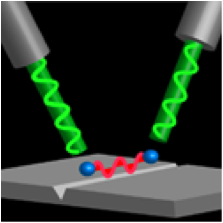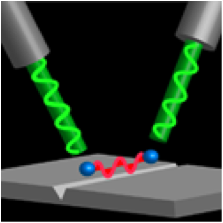Plasmonics guide the way to entanglement
Quantum entanglement, the process whereby physically separated quantum systems become linked so that the quantum description of one system requires knowledge of the other, has brought about exciting new physics and promising applications in quantum computing, quantum cryptography, and teleportation. For practical implementations of quantum computing, however, entanglement over long distances between qubits remains a key challenge. The usual route to overcome this involves photons, but now, writing in Physical Review Letters, Alejandro Gonzalez-Tudela and colleagues at the Universidad Autonoma de Madrid and the Universidad de Zaragoza, both in Spain, propose an alternative, plasmonic route toward long-distance entanglement.
In their scheme, a surface plasmon mode mediates the entanglement between two qubits sitting on the opposite edges of a milled groove in a silver film, which acts as a one-dimensional plasmonic waveguide. Through subwavelength light confinement in the waveguide, a large fraction of the radiation emitted from one qubit is captured by the waveguide’s propagating mode and transferred to the other qubit. Gonzalez-Tudela et al. derive analytical expressions for the coherent and incoherent parts of the coupling between the qubits. Crucially, they obtain a phase shift of between the coherent and incoherent parts, which allows them to switch off one of the two contributions while maximizing the other by altering the interqubit distance. This allows a plasmonic route to entanglement of qubits over distances larger than the operating wavelength. – Manolis Antonoyiannakis





